Toilet wipes are reshaping bathroom care. Many people find them cleaner and gentler than dry toilet paper. But they also raise smart questions: Are “flushable” wipes actually safe to flush? Are they better for sensitive skin? Do they hurt pipes, sewers, or the environment? And are they worth the money compared to toilet paper or a bidet?
This guide gives fast answers first, then the details. You’ll learn how flushability standards work, which ingredients to avoid if your skin is reactive, where wipes fit in your plumbing and sewer system, and how to lower cost and risk. You’ll also see how the market is changing, which options are biodegradable, and when pairing wipes with a bidet makes sense. By the end, you’ll know how to choose, use, and dispose of wipes in a way that fits your health, your home, and your values.
Quick Answers: Are Toilet Wipes Worth It?
When it comes to bathroom hygiene, toilet wipes have sparked a lot of debate. Are they just a trendy add-on, or do they actually make your routine cleaner and more comfortable? Before diving into details, let’s break down the main pros and cons so you can see at a glance whether toilet wipes are worth adding to your toilet routine.
Bottom line in 60 seconds: hygiene, safety, cost
-
Hygiene: In comparative tests, wipes remove up to 80% more bacteria than dry toilet paper alone, so they can offer a more thorough cleaning.
-
Comfort: Many wipes include aloe and pH-balanced solutions that feel gentle and may reduce irritation for sensitive skin.
-
Risk: “Flushable” is not a promise everywhere. Breakup can vary by brand and by local pipes. Binning is the safer choice in many homes.
-
Cost: Wipes cost more per use than TP. You can cut cost by using fewer wipes or pairing with a bidet to use a single “finishing” wipe.
-
Best for: Sensitive skin, hemorrhoids, postpartum care, periods, and wet wipes for adults who want a cleaner feel. Also great for travel.
Are toilet wipes better than toilet paper? For cleaning and comfort, often yes. For plumbing risk and cost, not always. The best setup for many homes is water-first (a bidet) and a small number of wipes or TP as a finishing step.
Are flushable wipes really flushable?
It depends on the wipe and your system. Some wipes pass dispersibility standards in lab tests, but your home may have older pipes, root intrusion, or narrow bends that trap any slow-breaking material. Water utilities in many regions still ask people not to flush wipes, even “flushable” ones, because they can clog pumps and form “fatbergs” when mixed with grease.
Safer habits if you do flush:
-
Limit to 1 wipe per flush.
-
Do not mix wipes with other non-dispersibles (pads, liners, floss).
-
If your municipality or plumber says “do not flush,” use a lidded bin.
Hint for a “Go/No-Go” decision: If your area or plumber advises against flushing wipes, or if you have a septic tank or older pipes, bin them. If you choose to flush, follow the “one wipe per flush” rule and keep grease out of the drain.
Who should and shouldn’t use bathroom wipes
Toilet wipes can be a good option if you want gentler care, if your skin is reactive, or if you manage hemorrhoids, postpartum recovery, or periods. Caregivers often find wipes helpful for kids and older adults who need a quick, effective cleaning.
Use with caution if you have a septic system, older pipes, or if your local utility says not to flush. Keep a small, lined bin with a lid. A friendly label helps guests know how to dispose of wipes.
The big environmental picture at a glance
Toilet paper uses wood pulp, water, and energy, and can be linked to deforestation. Toilet wipes can cause sewer clogs if they don’t break down fast. Plastic-free, biodegradable fibers can reduce harm, but disposal still matters. The lowest-waste option is usually a bidet plus minimal TP and only occasional wipes.

How to Choose the Right Wet Wipes
Not all wet wipes are created equal, and picking the right one can make a big difference for your comfort, skin health, and plumbing. From flushability to ingredients, there are key factors to consider so you get a wipe that’s gentle, effective, and fits your bathroom routine. Let’s break down what really matters when choosing the best wet wipes.
Flushable vs non-flushable: standards that matter
“Flushable” is not a single law or global rule. It often means a product passed a particular testing protocol. That’s useful, but not a guarantee for your home. Look for wipes tested against published standards, and learn what each one actually checks.
Comparison of common flushability guidance and what it means:
-
INDA/EDANA GD4 (or newer): Industry protocols that assess toilet and pipe clearance, disintegration, settling, and fiber content. Passing suggests better dispersibility in lab conditions.
-
IWSFG Publicly Available Specification (PAS): A stricter international group standard. Favors fast breakup and no plastic fibers.
-
Water UK “Fine to Flush”: A UK water industry mark for quick breakup and plastic-free content.
Red flags include plastic fibers (like polyester) and super-strong nonwoven materials that resist breaking apart. Labels like “septic-safe” or “sewer-safe” imply better breakup, but always check what test the brand cites and follow your local utility’s advice.
Ingredients and skin safety (dermatologist-aligned)
Skin comfort depends on what wipes contain—and what they don’t. If your bum or groin gets irritated, look for fragrance-free, alcohol-free, hypoallergenic, pH-balanced wipes. Additives like aloe vera can soothe, according to the CDC, which provides guidelines on skin care and hygiene. Preservatives such as phenoxyethanol are common and usually well tolerated, but anyone with reactive skin should patch test on the inner arm first.
For hemorrhoids, postpartum healing, periods, or eczema-prone skin, pick unscented formulas and avoid botanicals that can trigger allergies. In the wipes market, unscented options are popular for a reason—they now make up more than half of sales, showing many people prefer a low-risk formula.
Texture, size, and moisture: performance vs dispersibility
A wipe that is too thick may feel plush but could break down slowly. A very thin wipe may break down fast but feel less sturdy. The sweet spot is soft enough for comfort and strong enough for one gentle pass, yet able to break apart in water. Pack shape matters too. Resealable packs prevent dry-out; small travel packs solve on-the-go needs. For trips, keep a zip bag and plan to bin wipes on planes and trains.
You’ll see different product names—“wet wipes for adults,” “bathroom wipes,” “biodegradable wipes”—but what matters most is fiber content, skin safety, and how the wipe behaves in water.
Which wipes are septic-safe or sewer-safe?
For any home on a septic system, the conservative choice is to bin wipes. If you’re on city sewer and thinking about flushing, favor wipes that are plastic-free and tested to strict breakup standards. Still, many utilities prefer that you do not flush them at all.
Try a simple home jar test:
-
Fill a clear jar halfway with warm tap water.
-
Drop in one wipe. Close the lid.
-
Shake firmly for 30 seconds.
-
Let it sit for 30–60 minutes.
-
Check if the wipe has broken into smaller pieces. If it stays intact, bin it, don’t flush.
This test isn’t perfect, but it’s a quick way to spot poor breakup.
Health & Hygiene: Skin, Safety, Use Cases
Keeping your skin healthy while staying clean is more than just wiping—it’s about choosing products that protect and soothe. In this section, we’ll explore how toilet wipes and wet wipes affect skin, from sensitive skin to postpartum care. Understanding these factors can make your bathroom routine gentler and more effective.
Data-backed hygiene upgrade vs toilet paper
A key reason people switch is cleaning power. In comparative testing, wipes remove far more bacteria than dry TP alone. Many people feel cleaner with a single wet wipe than with many passes of dry paper. The cleanest routine often uses water first (a bidet spray), then a wipe or small amount of TP to finish and dry. This lowers friction and supports skin health.
Best practices:
-
Use a wipe as a finishing step. Gentle pats work better than hard rubbing.
-
One wipe is often enough for solids; add a second only if needed.
-
If using TP after a wipe, pat dry to keep the area less moist.
Sensitive skin, hemorrhoids, postpartum, and periods
If your skin reacts easily, choose fragrance-free, pH-balanced wipes with aloe or other soothing ingredients, and avoid harsh surfactants. For hemorrhoids, extra rubbing can make pain worse. Pat instead of scrubbing. In postpartum recovery, keep the area clean with water or gentle wipes and follow your care team’s advice. During periods, wipes can help with odor control without strong perfumes.
When should you see a clinician? If you notice ongoing irritation, stinging, discharge, dermatitis, or infection, stop using the product and seek medical advice.
Kids, elderly, and caregiving tips
Wipes can make cleanup easier for children and older adults. Teach safe handling and proper disposal. Show kids the difference between the toilet and the bin. For travel, carry a resealable pack and a small bag to bin used wipes. Do not flush wipes in trains, planes, or portable toilets.
Are toilet wipes safe for sensitive skin?
Yes—if the formula is simple and dermatologist-tested, and you patch test first. Look for labels like fragrance-free, alcohol-free, hypoallergenic, and pH-balanced. If your skin is very reactive, ask your clinician to review the ingredient list.

Plumbing, Flushability & Environmental Impact
Using toilet wipes isn’t just about feeling clean—it can also affect your pipes and the environment. Before you toss that wet wipe, it helps to understand how different types break down, what risks they pose to plumbing, and the environmental footprint of disposable wipes versus toilet paper. Let’s dive into what really happens after you flush.
What happens after you flush: pipes and wastewater 101
From your toilet, waste moves through bends and joins in your home pipes, then to the street sewer. Older pipes with rough insides, root intrusion, or tight angles can snag anything that doesn’t break down fast. In the sewer, wipes can tangle with grease and form large clogs called fatbergs. These block pumps, increase waste treatment costs, and sometimes force raw sewage overflows.
This is why many utilities still say to bin wipes, even if labeled “flushable.” The risk is not only in the toilet. It’s also in the long path through pipes and pumps to the treatment plant.
Certifications, labeling, and local rules
There are different standards for “flushability.” Industry tests (like INDA/EDANA GD4) aim to simulate real conditions, while independent groups (like IWSFG) set stricter pass/fail criteria focused on quick disintegration and plastic-free content. Water UK’s “Fine to Flush” mark is another check many consumers trust.
Your best action: follow your local water utility’s rules. If they say “no wipes down the toilet,” put them in a lined bin. If your home has older plumbing or a septic tank, choose binning even if a wipe passes a test.
If you flush:
-
Flush only one wipe at a time.
-
Do not flush wipes with other non-dispersibles.
-
Keep fats, oils, and grease out of the sink to reduce fatberg formation.
Environmental footprint: wipes vs toilet paper
Both wipes and TP have environmental impacts, but they are different:
-
TP uses trees, lots of water, and energy. Tissue production can add to deforestation and water pollution.
-
Wipes can use plant-based fibers or plastic fibers. Plastic fibers do not break down and can add to microplastic issues. Even plant-based wipes can cause clogs if they don’t disperse quickly. When binned, they add to solid waste unless compostable (most are not certified for home compost, and bathroom wipes should not be composted after use).
The lowest-impact everyday setup is often a bidet plus a small amount of TP and only occasional wipes. Water rinsing reduces the number of wipes you need by 70–90% in many homes, which also lowers cost and clog risk.
Are toilet wipes bad for the environment?
It depends. A plastic-free, well-dispersing wipe that you bin can have a lower system impact than a plastic-heavy wipe you flush. But any disposable product has a footprint. If you want the greenest approach, put water at the center of your routine and treat wipes as a targeted tool, not the main event.
Market Trends & User Preferences
Toilet wipes are no longer just a niche product—they’ve become a staple in many bathrooms worldwide. In this section, we’ll look at how the market is evolving, which types of wipes people prefer, and what drives adoption or hesitation. Understanding these trends helps you see where toilet wipes fit into everyday routines and why some options are gaining popularity.
Size, growth, and segments
Toilet care wipes are growing fast. The market is valued in the tens of billions of dollars today and is forecast to grow at about 6–7% each year in the next decade. Conventional wipes make up a clear majority of sales, while unscented options now account for more than half of the segment. Households are the main buyers, showing that wipes have moved from a niche item to an everyday bathroom tool.
What drives adoption—and hesitation
Why do people switch? Hygiene, comfort, and the feeling of being clean are the top drivers. People with sensitive skin often notice less irritation because wipes reduce dry friction. On the other hand, people worry about clogs, sewer blockages, and environmental trade-offs. Cost also gives some shoppers pause compared to a big roll of TP.
Toilet paper vs wipes: global context
Toilet paper still dominates worldwide purchase habits, with the United States as the largest consumer. Wipes are growing as a complement, not a full replacement. In places with stricter rules or older sewer systems, people are more likely to bin wipes or avoid flushing.
Social sentiment and real-world use
If you ask around, you’ll hear the same pattern: users praise the clean, silky wipe and how quick it is to use, but debates about flushing never stop. A simple fix is to give guests clear disposal rules. A small bin with a lid, a gentle “please don’t flush wipes” sign, and a box of TP in view take away confusion.

Cost & Value: Wipes vs Toilet Paper vs Bidet
When it comes to keeping clean, comfort often comes with a price. Toilet wipes, toilet paper, and bidets each have different costs, both upfront and over time. In this section, we’ll break down how much you can expect to spend, hidden expenses to watch for, and strategies to get the best hygiene without overspending.
Cost-per-use and annual household scenarios
Prices vary by region and brand, but you can plan with simple math. Here are sample numbers to help you compare options. Adjust to your store prices and habits.
Assumptions:
-
Wipes: $0.06–$0.12 per wipe; 1 wipe per solid bathroom visit (some use 2).
-
TP: $0.02–$0.05 per average use (depends on sheet count and ply).
-
Bidet: One-time device cost $40–$400; water cost per use is tiny (fractions of a cent); reduces wipes used by ~70–90%.
Example monthly cost ranges (per person, 30 solid visits/month):
-
Wipes only (1 per visit): $1.80–$3.60/month.
-
Wipes only (2 per visit): $3.60–$7.20/month.
-
TP only: ~$0.60–$1.50/month for solids (varies widely with usage).
-
Bidet + one finishing wipe (50% of visits): ~$0.90–$1.80/month in wipes plus minimal water.
Household scenarios (assume 1 wipe per solid visit per person, 30/month):
-
1 person: $1.80–$3.60/month in wipes; $21.60–$43.20/year.
-
3 people: $5.40–$10.80/month; $64.80–$129.60/year.
-
5 people: $9.00–$18.00/month; $108.00–$216.00/year.
These are estimates. If family members use 2 wipes, costs double. If you add a bidet, many homes cut wipes by 70–90%, which can bring annual costs back near TP-only spending after the bidet pays for itself.
Hidden costs and risk management
Hidden costs include:
-
Potential plumbing bills if wipes clog your system.
-
Sewer fees and community costs due to blockages (paid through rates or taxes).
-
Bin liners and time costs to set up and empty bins.
How to cut risk:
-
Use fewer wipes.
-
Bin instead of flush, especially with septic or older pipes.
-
Choose plastic-free, fast-dispersing wipes if you flush at all.
-
Keep fats and oils out of the sink to limit fatberg formation.
Save money without sacrificing hygiene
Try a bidet spray for the main clean, then one wipe or a few sheets of TP to finish. Buy unscented multi-packs to lower the per-wipe price. Seal packs well so wipes don’t dry out. Store extras in a cool cabinet.
Are toilet wipes cost-effective?
Often yes if used for targeted cleaning, not as your only tool. Many people find the comfort and hygiene worth the small added cost. If you want the best value long-term, water-first with a bidet and a single wipe when needed is hard to beat.

Best Toilet Wipes & Smart Alternatives
Selection criteria that actually matter
Here’s how to judge wipes that work in real life:
-
Dispersibility and certifications: Look for tests like INDA/EDANA protocols, IWSFG PAS alignment, or Water UK “Fine to Flush.” This doesn’t mean “safe in every pipe,” but it’s a useful signal.
-
Skin safety: Favor fragrance-free, alcohol-free, pH-balanced formulas. Patch test.
-
Fiber source: Prefer plastic-free, plant-based fibers that can break down in water.
-
Cost per use: Figure out your per-wipe cost and how many you actually need.
Weight these based on your home. If you’re on septic or have older pipes, make dispersibility and binning plan your top factors.
Best picks by need state
-
Sensitive skin: Simple, fragrance-free, pH-balanced wipes with soothing ingredients. Keep a short ingredient list.
-
Travel: Slim, resealable packs with lower residue. Bring a sealable bag for disposal; do not flush on transport.
-
Eco-conscious: Plastic-free fibers, rapid breakup claims, minimal packaging, and a clear disposal plan (bin). Pair with water to reduce your total wipe use.
Which wipes are best to use after pooping? The best option is a wipe that is plastic-free, pH-balanced, and gentle, used as a finishing step after water or TP. If flushing is risky where you live, choose a wipe you feel good about binning.
Alternatives beyond wipes
-
Bidet/attachments: A simple bidet attachment uses very little water per use and cuts disposable waste. Many people report fewer rashes and less itch.
-
Wipe-replacement liquids: Apply a small amount of a gentle, water-based cleansing solution to TP. This can give a wet clean without adding a physical wipe to your plumbing.
-
Reusable cloths: If you explore this route, use a clear, hygienic wash routine with hot water and a proper detergent. Store used cloths in a sealed container and wash promptly. Do not mix with regular laundry without proper sanitation steps.
Which is better: wipes or a bidet?
For daily hygiene and environmental impact, a bidet wins for most homes. Wipes still have a place as a quick finishing step or for times when water is not handy. Many households use both: water to clean, a single wipe to check and finish, and TP to pat dry.

Safe-use checklist and bathroom setup
-
Keep wipe count low: start with one; add a second only if needed.
-
Pat, don’t scrub. Let the moist wipe do the work.
-
Bin rather than flush, unless a plumber or local utility confirms your system can handle a specific dispersible wipe.
-
Use a lidded, lined bin near the toilet. Add a small “do not flush wipes” note for guests.
-
Always close the lid before flushing to limit droplets.
-
If drains slow down or gurgle, stop flushing wipes and call a plumber early.
Final guidance and quick decision help
Still wondering: “Are wet wipes better than toilet paper?” Think about your priorities.
-
If your top goal is comfort and a more thorough cleaning, toilet wipes can help—especially if you have sensitive skin.
-
If you want the lowest plumbing and environmental risk, a bidet plus a small amount of TP is your best daily setup.
-
If you love wipes but worry about clogs, use a lidded bin and choose biodegradable, plastic-free wipes so you’re not adding microplastics to the waste stream.
In short, wipes can be part of a smart, clean, and eco-aware bathroom routine. Keep the number of wipes low, use water when you can, follow local rules, and treat your plumbing kindly. Small choices—like one wipe instead of three, or binning instead of flushing—can make a big difference for your pipes, your sewer, and your wallet. And your skin will thank you.
FAQs
1. What are the best wipes to use after pooping?
The best wipes for your bum are usually those that are plastic-free, fragrance-free, and pH-balanced, designed to be gentle on sensitive skin. Think of them as an addition to your usual routine rather than the only cleaning method—you still want to get most of the work done with water or TP first. Many people find that natural ingredients like aloe or chamomile improve the overall experience, reducing irritation and leaving a fresh feel. Always check what the wipes contain, especially if you have reactive skin. And remember, even if a wipe claims to be flushable, it’s safer to bin them if your pipes are old or your local utility advises against flushing. This way, you enjoy a cleaner feeling without risking a clog or plumbing headache.
2. Are toilet wipes better than toilet paper?
Wipes can feel better than toilet paper for cleaning and comfort, especially for those with sensitive skin or hemorrhoids. They leave a softer, more refreshing experience and reduce friction compared to dry TP. That said, toilet paper is cheaper, simpler, and easier on plumbing, making it a reliable choice. Many people find the perfect balance by using a bidet first, then a single wipe or some TP to finish—this minimizes waste and cost while keeping things hygienic. Some even wonder, “can you use wet ones as toilet paper?”—and yes, in a pinch, they work, but always bin if flushability is questionable. Using free-of-harm, natural wipes as a finishing touch makes the routine feel more comfortable without overcomplicating your bathroom setup.
3. Are there any actual flushable wipes?
Some wipes do pass formal dispersibility tests, like INDA/EDANA or IWSFG-aligned standards, and even Water UK’s “Fine to Flush” certification. That said, even the most lab-tested wipes can behave differently in real homes—older pipes, bends, or grease can still trap them. The best experience comes from choosing plastic-free, natural wipes that break down easily and using them sparingly. Always follow your local rules: just because a package says “flushable” doesn’t mean you should risk a clog. Many people keep a small lidded bin nearby for safety. Remember, these wipes are a gentle addition, not a replacement for TP or water, and they give a clean, soft finish without overloading your plumbing system.
4. Should adults use wet wipes after pooping?
Absolutely—wipes can make a big difference if you want to feel clean and refreshed. Adults with hemorrhoids, postpartum recovery needs, or sensitive skin often report that wipes for your bum provide a soothing, less abrasive experience compared with TP alone. The trick is to use them wisely: a single wipe or two is usually enough, and bin them if your pipes aren’t suited for flushing. Choosing wipes free of harsh chemicals and fragrances makes the experience more comfortable and reduces irritation. Some natural, pH-balanced wipes also contain aloe or soothing ingredients, which improves the overall sensation. When combined with water or TP, they give a hygienic finish that many find superior to paper alone.
5. What are the disadvantages of wet wipes?
Wet wipes are convenient, but they do have downsides. They cost more per use than toilet paper, and if flushed incorrectly, they can clog pipes or contribute to fatbergs in sewers. Even binned, they add to household waste, which is something to consider if you’re eco-conscious. Some wipes contain fragrances or other additives that can irritate sensitive skin. The good news is you can reduce these risks by choosing free, plastic-free, and natural options, and by using fewer wipes each time. Many people find that using a wipe as a finishing step—after water or TP—gives the best experience. Overall, they’re a helpful addition when used thoughtfully rather than a full replacement for traditional toilet paper.

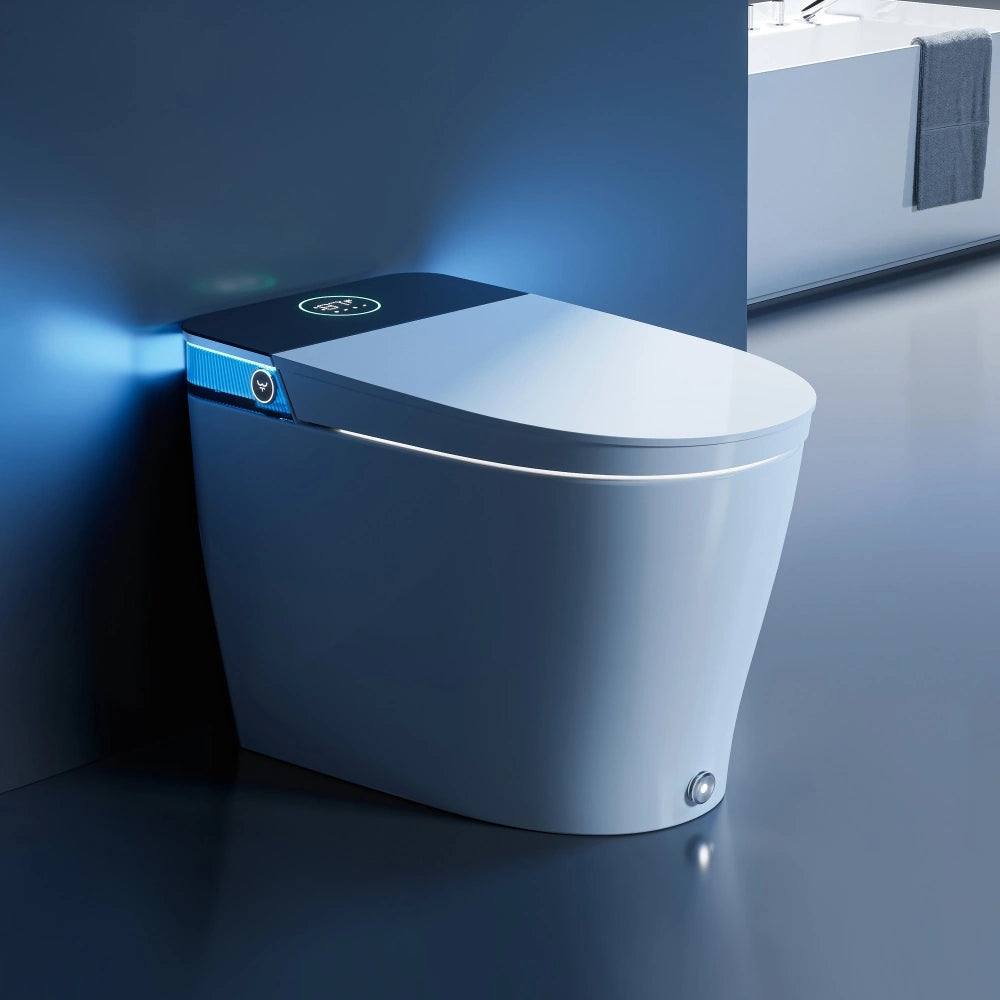
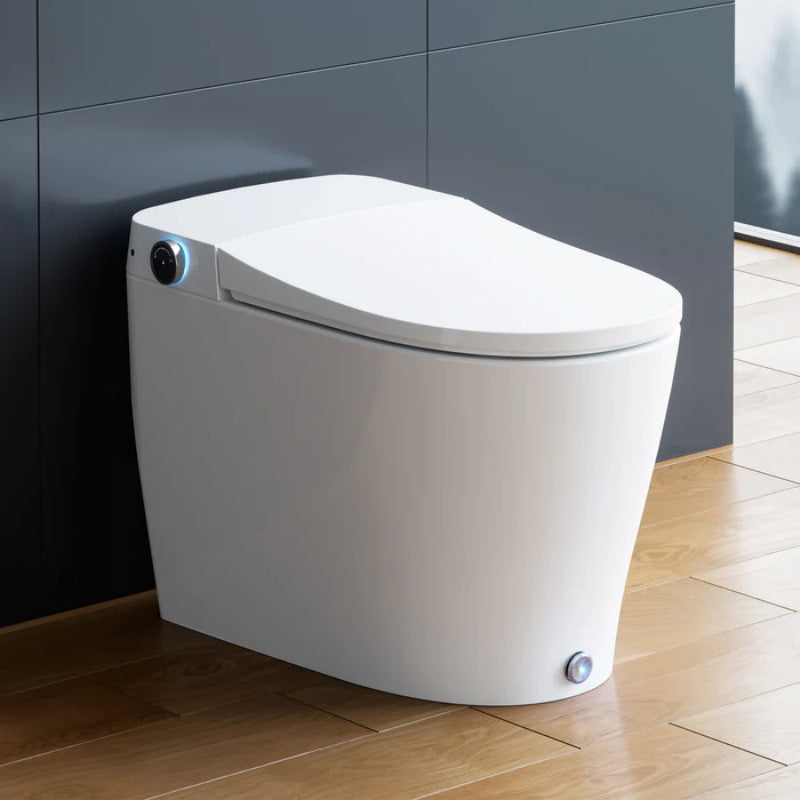
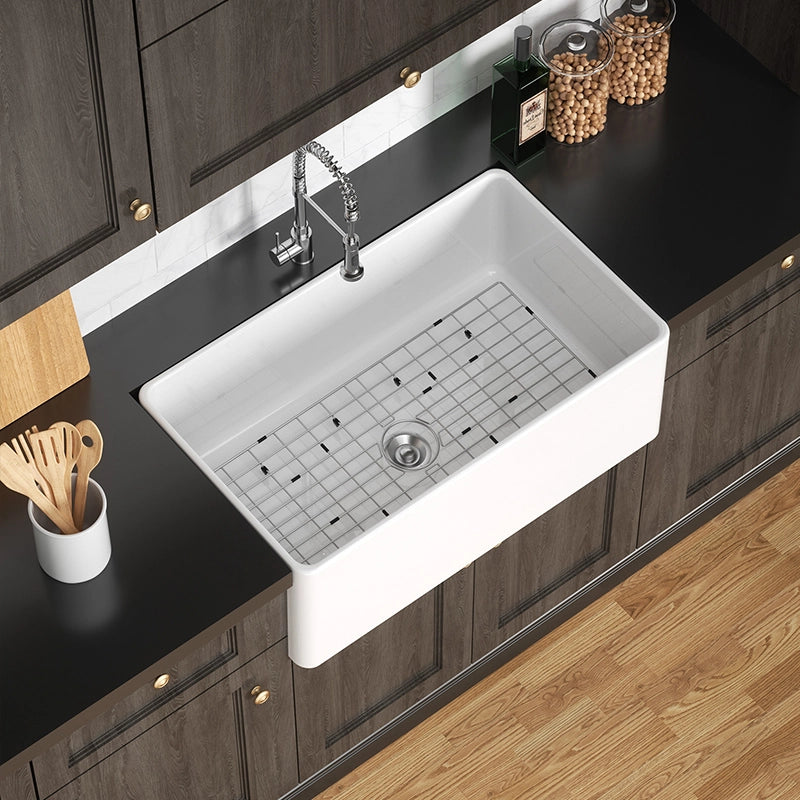
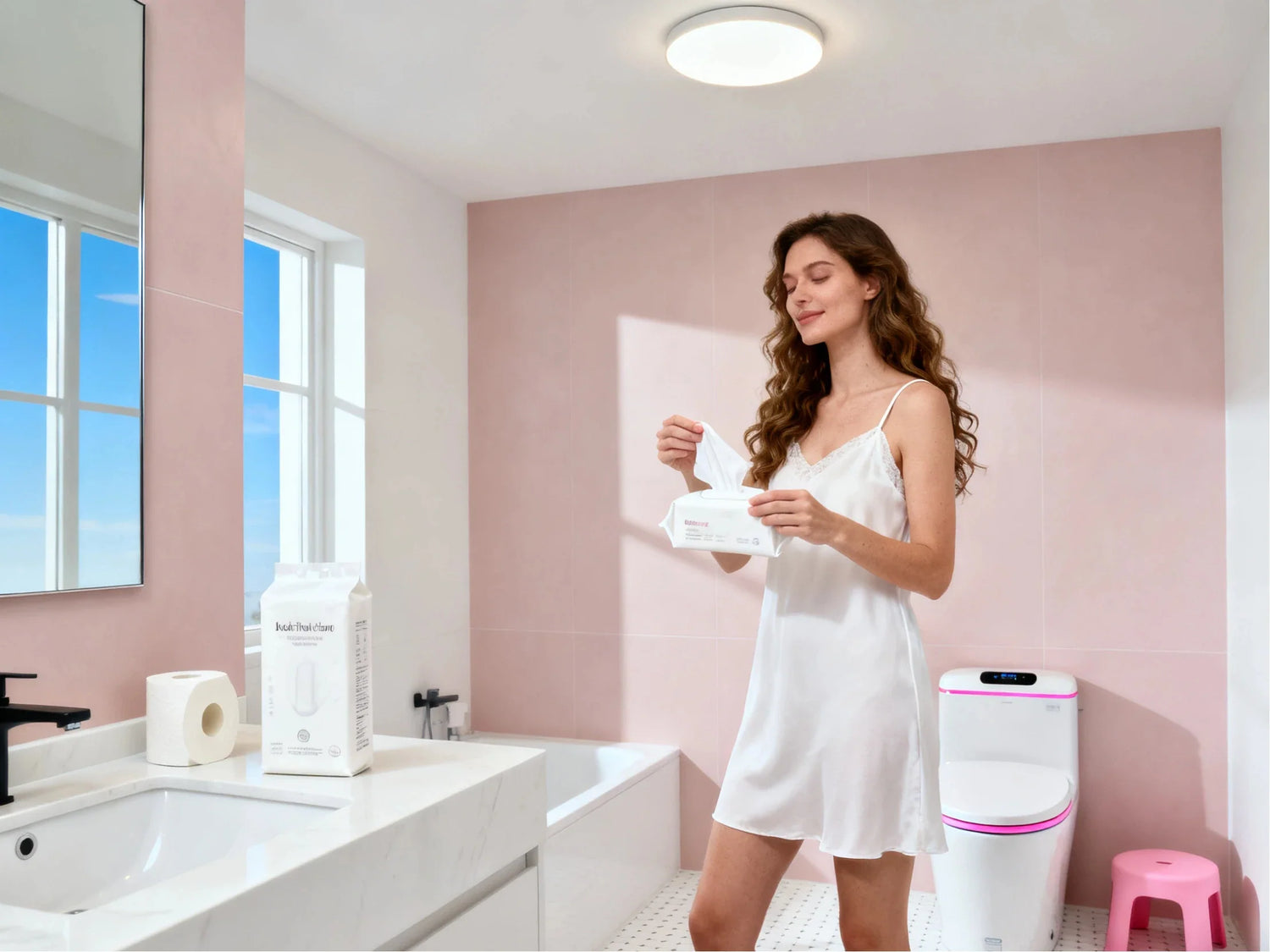
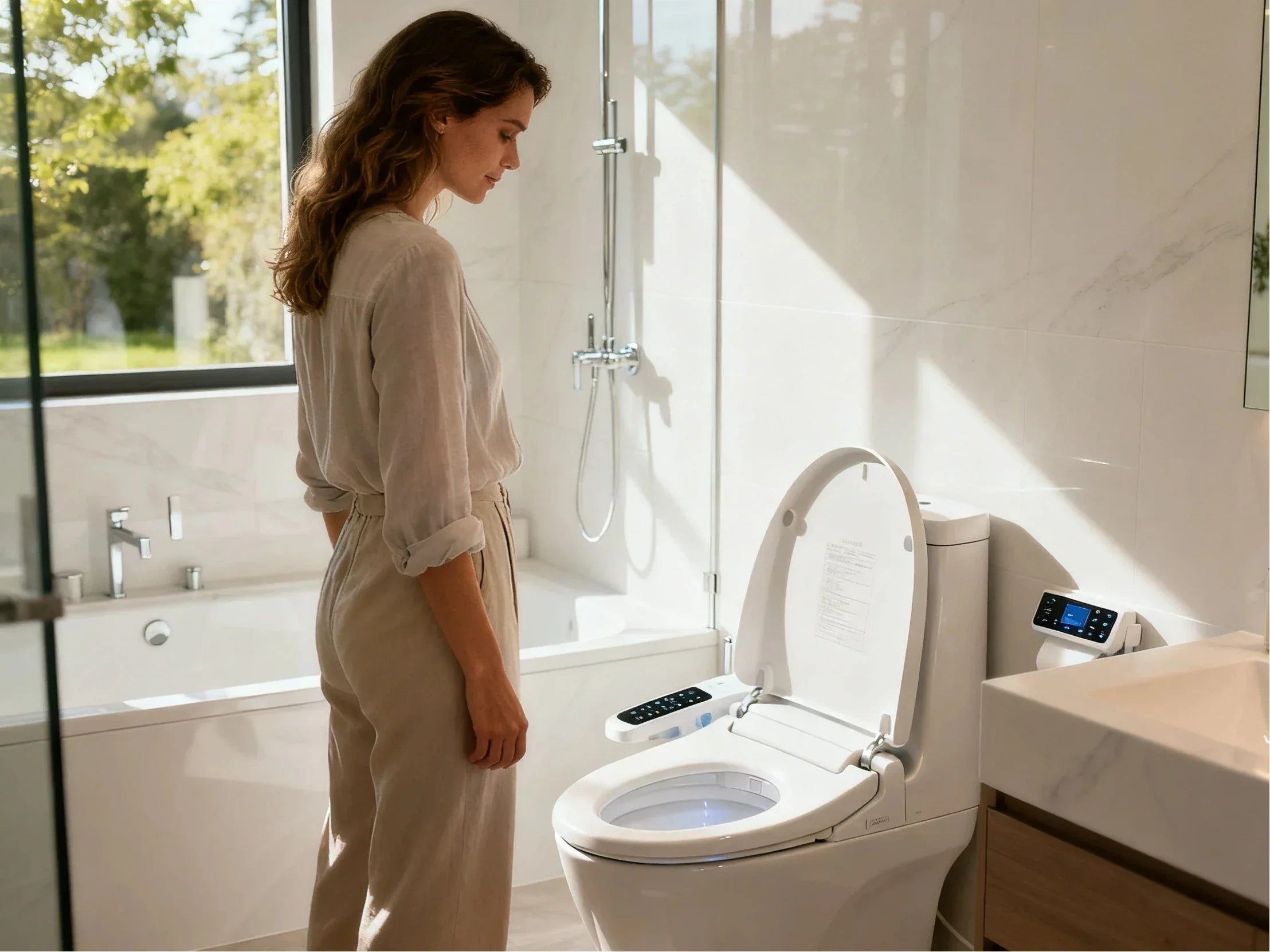


Leave a comment
This site is protected by hCaptcha and the hCaptcha Privacy Policy and Terms of Service apply.